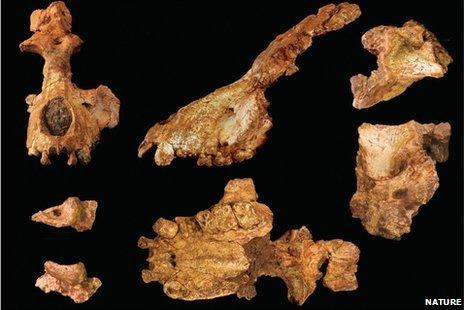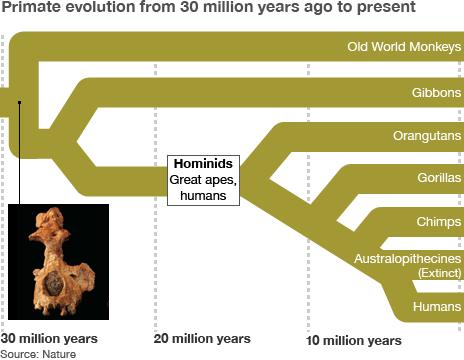Fossil links humans and monkeys
- Published

The primate had some features that are shared by Old World monkeys and apes
Researchers have discovered the skull of a 29 million-year-old animal that could be a common ancestor of Old World monkeys and apes, including humans.
It indicates that apes and Old World monkeys diverged millions of years later than previously thought, say the scientists.
The discovery was made in Saudi Arabia by researchers from the University of Michigan.
They described the primate, Saadanius hijazensis, in the journal Nature.
Dr William Sanders from the University of Michigan, who led the research, said this was "an extraordinary find".
The skull of this previously unknown species had some features that are shared by Old World monkeys and apes, including humans, today
"Saadanius is close to a group that eventually led to us," said Dr Sanders.

"If we knew something about the time period and the condition this animal was living in, we might be able to discover what brought about the changes that led to [the evolution of] apes and humans".
The research raises the question of whether Saadanius might even have been the common ancestor that linked humans to Old World Monkeys.
"It could, but there could have been a suite of creatures at the time that were very similar and one of them became our ancestor," Dr Sanders explained. "We need to get out in the field and get more data before making bigger claims."
The fossilised remains indicate that the primate looked very much like a modern new world monkey, such as a capuchin. But it was probably slightly larger - about the size of a gibbon.
It would have used all four limbs to run around in the trees. When resting, the scientists say, it probably lay in the trees rather than sitting upright on the ground.
The discovery suggests that the divergence of apes and Old World monkeys happened much later than the 30-35 million years ago that genetic studies have suggested.
The new date, of 29 million years ago, fits more closely with what the researchers would have expected and is not surprising from a palaeontological point of view.